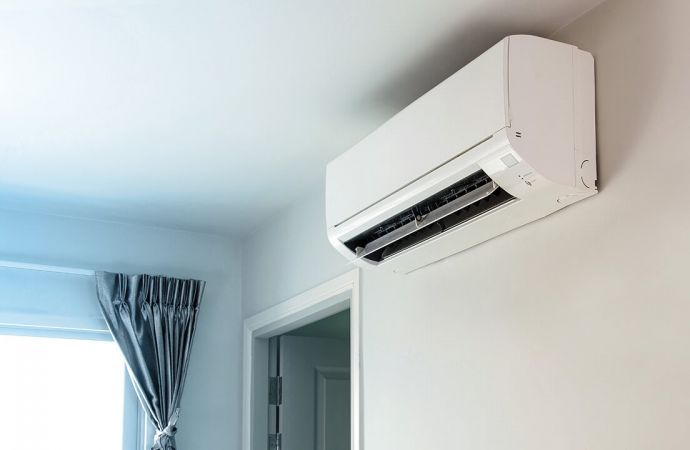The TAFE South Australia vocational school has been using virtual reality for instruction on natural refrigerants – and is seeking industry input.

Shannon Baldock, TAFE South Australia, demonstrating virtual reality headset at ATMOsphere Australia
One of the perennial challenges facing the HVAC&R industry is training and recruiting new technicians to replace aging employees as systems grow increasingly complex.
But a younger generation enamored of digital technology may find learning via virtual reality (VR) – an experience taking place within a simulated and immersive environment, typically facilitated by a headset – just the ticket.
TAFE (Technical and Further Education) South Australia, an Adelaide –based vocational school, launched its virtual reality pilot program on natural refrigerant safety training last year. The program has proved to be very successful in engaging students and improving learning outcomes.
"We get retention rates between 60% and 70% of the information given," said Shannon Baldock, TAFE's air conditioning and refrigeration lecturer, at the ATMOsphere Australia 2019 conference, held in Melbourne May 8-9.
TAFE SA is now reaching out to the natural refrigerant community to collaborate and contribute to the program, which the school believes has significant potential to help solve the training gap the industry is facing.
"[VR technology] has moved on from 'look we've got some shiny new hardware,'" said Baldock. "We've made it practical. What we need now is the content to give to our students.”
Content, he said could come from “engineers that built the system,” end users who want to “show us how they are being energy efficient,” or contractors who want to “share what they are doing."
Following his ATMOsphere Australia presentation, Baldock said he has received a significant amount of interest in contributing to the initiative from the natural refrigerant community. “Several people were very keen to open up their doors, collaborate, and share their content with us,” he said.
Discussions are already underway for major natural refrigerant end users, contractors and system manufacturers to begin delivering immersive video content to TAFE SA's virtual reality program.
The delivery that the lecturer gives in the immersive video is not to a group of 16 students – it’s to one bloke, the person in the headset."
– Shannon Baldock, TAFE South Australia
Students in TAFE SA's Certificate III Air-Conditioning and Refrigeration program are using Lenovo Mirage Solo virtual reality headsets in elective classes teaching the safe use of CO2, ammonia and hydrocarbons in refrigeration. An Adelaide-based startup, Lateral Vision, delivers immersive video walk-through tours of natural refrigerant system plant rooms by TAFE SA lecturers.
Baldock attributes the improved retention rates partly to the use of immersive video. "Immersive video for training is really, really powerful," he said.
He also credits VR technology's inherent advantage in being able to provide each student with a "one-on-one" training experience. "The delivery that the lecturer gives in the immersive video is not to a group of 16 students – it’s to one bloke, the person in the headset," he said. "That's a totally different interaction." This can be particularly effective if the instructor “knows and is passionate about what they are talking about."
The advanced nature of VR, Baldock added, makes it a "natural fit" with the natural refrigerant sector’s innovation, leadership and excitement about the future.
Moreover, industry stakeholders can do the instructing via VR. Rather than speaking about what is happening in the natural refrigerant sector in front of a classroom, Baldock said, "wouldn't it be better if that was on site with a camera talking about your own plant?"
VR offers the opportunity to “infect people with your enthusiasm about it,” he said. “You want to be standing in front of your plant going, 'How fantastic is this stuff!’”
Baldock reminded the audience at ATMOsphere Australia that VR is no longer a fad and will have a huge impact on training and the industry. "It is projected that by 2022 [VR] will be a 200 billion dollar industry," Baldock said. "We can start thinking now about what we are going to do for training,” he added. “How can we use this in the industry?
"This is something we are looking to collaborate with the industry on,” he continued. “I'd like to see involvement from as many of you as we can in our project."
Related stories



